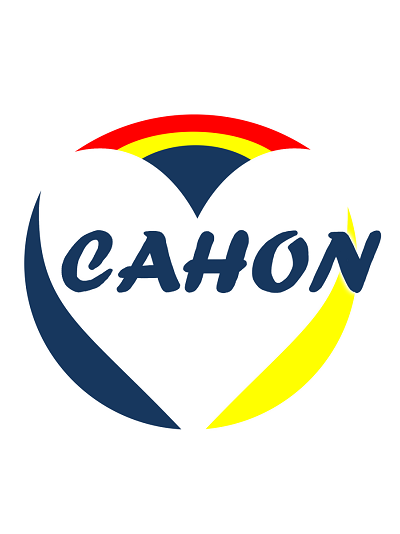免疫衰老和癌症:分子标志、肿瘤微环境重塑和年龄特异性免疫治疗挑战
IF 40.4
1区 医学
Q1 HEMATOLOGY
引用次数: 0
摘要
免疫衰老,即与年龄相关的免疫功能下降,通过培养促进肿瘤的微环境和损害免疫监测,深刻影响癌症的进展和治疗结果。本文综述了免疫衰老的11个分子特征,包括基因组不稳定、端粒磨损、表观遗传失调、线粒体功能障碍和慢性炎症,它们共同驱动免疫细胞功能障碍和全身免疫抑制。衰老通过募集免疫抑制细胞、衰老相关分泌表型(SASP)和代谢重编程重塑肿瘤微环境(TME),导致老年患者治疗抵抗和预后不良。虽然免疫疗法如免疫检查点抑制剂(ICIs)和嵌合抗原受体T细胞免疫疗法(CAR-T)细胞显示出希望,但它们在老年人群中的疗效受到T细胞衰竭、骨髓偏倚和细胞间通讯改变的限制。新兴策略——包括抗衰老药物、表观遗传调节剂(如组蛋白去乙酰化酶(HDAC)抑制剂)和代谢干预(如亚精胺、烟酰胺单核苷酸(NMN))——强调了恢复老年免疫的潜在途径。单细胞多组学(单细胞RNA-seq,单细胞ATAC-seq)进一步揭示了免疫细胞的异质性,揭示了组织特异性染色质可及性动力学和白细胞介素-34 (IL-34)等新靶点在小胶质细胞介导的神经炎症中的作用。然而,将临床前研究结果转化为临床实践仍然存在挑战,需要针对年龄的试验和生物标志物驱动的方法。通过将机制见解与转化创新相结合,本综述强调了解决免疫衰老问题以优化针对老龄化人群的癌症免疫治疗的紧迫性,最终弥合衰老生物学和精确肿瘤学之间的差距。本文章由计算机程序翻译,如有差异,请以英文原文为准。
Immunosenescence and cancer: molecular hallmarks, tumor microenvironment remodeling, and age-specific immunotherapy challenges
Immunosenescence, the age-related decline in immune function, profoundly impacts cancer progression and therapeutic outcomes by fostering a tumor-promoting microenvironment and impairing immune surveillance. This review delineates eleven molecular hallmarks of immunosenescence, including genomic instability, telomere attrition, epigenetic dysregulation, mitochondrial dysfunction, and chronic inflammation, which collectively drive immune cell dysfunction and systemic immunosuppression. Aging reshapes the tumor microenvironment (TME) through recruitment of immunosuppressive cells, senescence-associated secretory phenotypes (SASP), and metabolic reprogramming, contributing to therapy resistance and poor prognosis in elderly patients. While immunotherapies such as immune checkpoint inhibitors (ICIs) and chimeric antigen receptor T-cell immunotherapy (CAR-T) cells show promise, their efficacy in aging populations is limited by T cell exhaustion, myeloid bias, and altered intercellular communication. Emerging strategies—including senolytics, epigenetic modulators (e.g., histone deacetylase (HDAC) inhibitor), and metabolic interventions (e.g., spermidine, nicotinamide mononucleotide (NMN))—highlight potential avenues to rejuvenate aged immunity. Single-cell multi-omics (single cell RNA-seq, single cell ATAC-seq) further unravel immune cell heterogeneity, revealing tissue-specific chromatin accessibility dynamics and novel targets like interleukin-34 (IL-34) for microglia-mediated neuroinflammation. However, challenges persist in translating preclinical findings to clinical practice, necessitating age-tailored trials and biomarker-driven approaches. By integrating mechanistic insights with translational innovations, this review underscores the urgency of addressing immunosenescence to optimize cancer immunotherapy for aging populations, ultimately bridging the gap between aging biology and precision oncology.
求助全文
通过发布文献求助,成功后即可免费获取论文全文。
去求助
来源期刊
CiteScore
48.10
自引率
2.10%
发文量
169
审稿时长
6-12 weeks
期刊介绍:
The Journal of Hematology & Oncology, an open-access journal, publishes high-quality research covering all aspects of hematology and oncology, including reviews and research highlights on "hot topics" by leading experts.
Given the close relationship and rapid evolution of hematology and oncology, the journal aims to meet the demand for a dedicated platform for publishing discoveries from both fields. It serves as an international platform for sharing laboratory and clinical findings among laboratory scientists, physician scientists, hematologists, and oncologists in an open-access format. With a rapid turnaround time from submission to publication, the journal facilitates real-time sharing of knowledge and new successes.

 求助内容:
求助内容: 应助结果提醒方式:
应助结果提醒方式:


